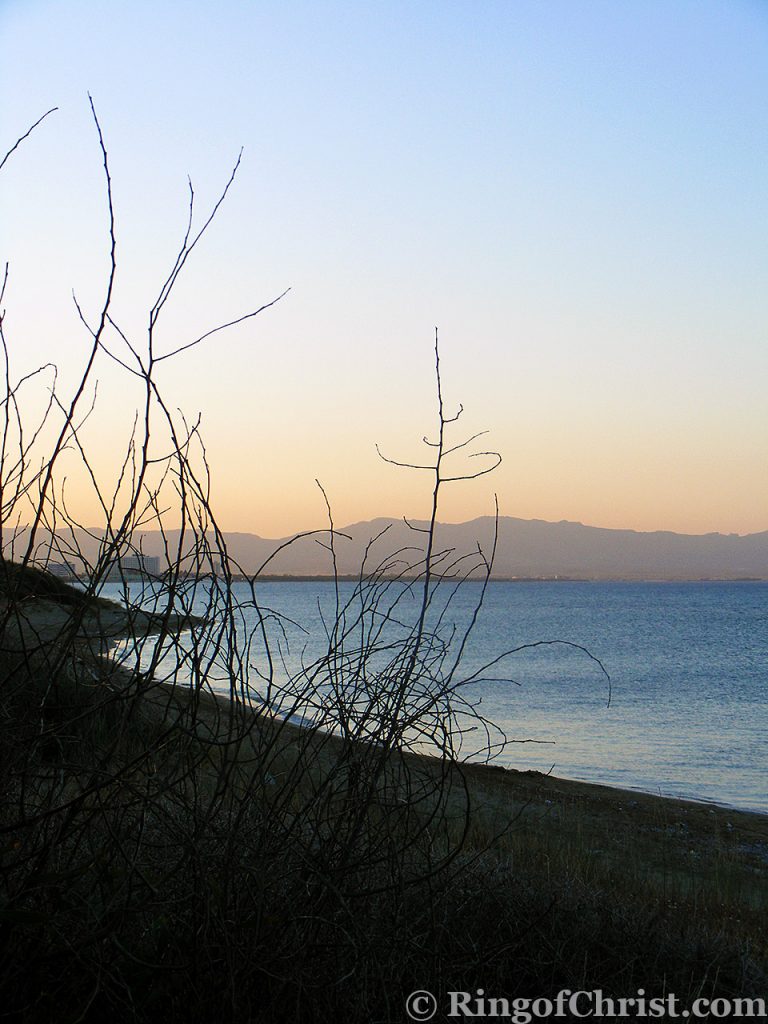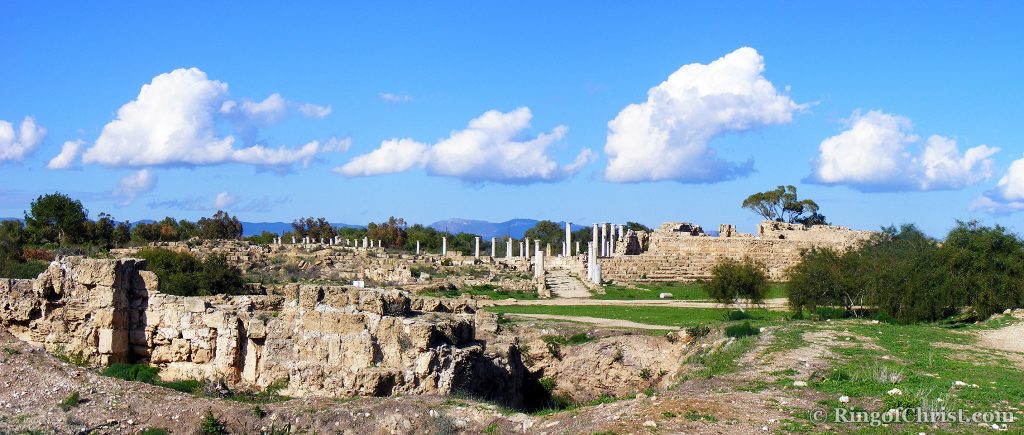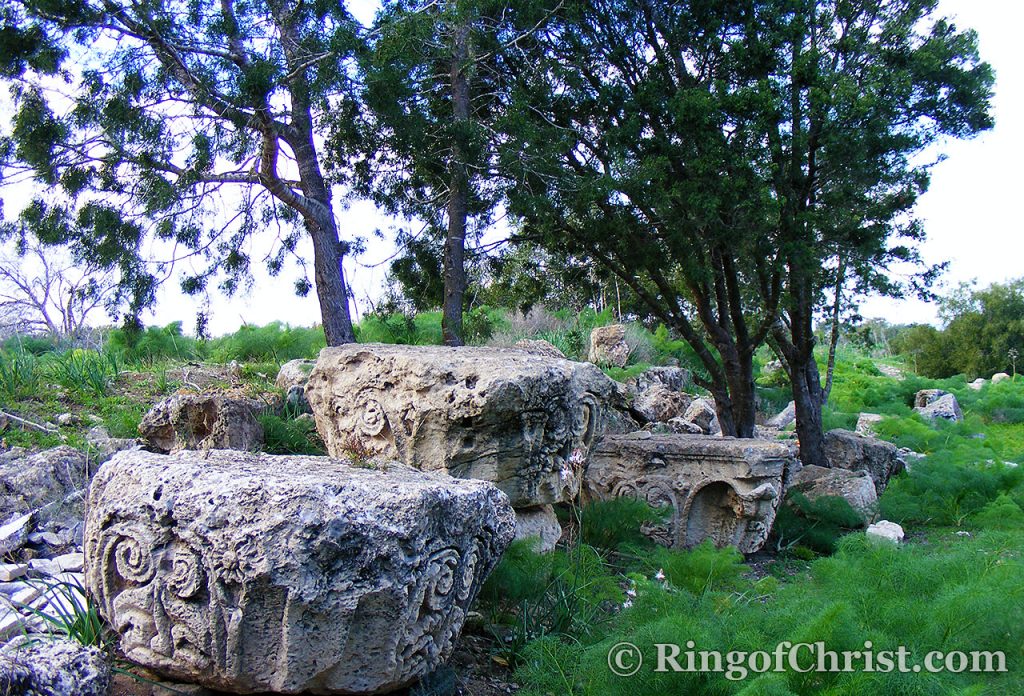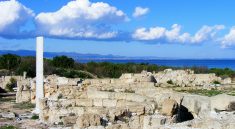The story of the first missionary journey to Cyprus actually begins on the island itself a few years before Barnabas and Saul ever set foot there, for “there were some of them, men from Cyprus and Cyrene, who came to Antioch and began speaking to the Greeks also, preaching the Lord Jesus” [Acts 11:20].

It is therefore likely that when Barnabas and Saul arrived in Salamis on the Cypriot east coast, the local Followers of the Way were already expecting them. And since the Bible clearly emphasizes that only the two of them set out for Cyprus, John Mark, who we know was present on the island with them, might have gone ahead to meet with local Christians on the island to prepare for their arrival.
Acts 13 contains a mere nine verses (5-13) which shed light on the first stage of Barnabas and Paul’s first missionary journey across Cyprus. Yet, using Biblical text, ancient excavated locations, archaeological evidence, and local tradition, a not only plausible, but a probable sequence of events can be assumed.
The Cypriot leg of the first Missionary Journey is usually overlooked because there are so few passages relating to Cyprus in the Bible, yet they are in fact crucial to laying the foundation for Barnabas and Paul’s mission to spread the Word of Christ among the Gentiles in foreign lands.
Salamis – A Thriving City of the Mediterranean

During this time, Salamis was the island’s primary port, as well as its main commercial center. It was a city with a large enough Jewish population to support multiple synagogues.
So, this first leg of the journey in Salamis gave the pair the opportunity not only to hone their missionary and preaching skills in multiple synagogues there, but also later in Paphos. The first Missionary Journey gave them the opportunity to engage in spiritual combat against their formidable adversary, Elymas, also known as Barjesus.


The Temple of Zeus was the most important structure and religious center of Salamis; it dominated the city. This sophisticated, thriving metropolis, catered to the elite class with its amphitheater, extensive bath complex, gymnasium, agora, and an expansive hippodrome. All of these principal structures, including the five synagogues, illustrate the prosperity of this commercial center of the Roman Empire.
Acts 13:4-12
Although Acts 13:4-12, does not include any details of what happened in the island’s synagogues, by the time they arrived in Antioch in Pisidia, a regular pattern seems to have been established by the pair when preaching to the Jews. Proving that point is the following quote from Acts 13:14-15
“On the Sabbath they entered the synagogue and sat down. After the reading from the Law and the Prophets, the leaders of the synagogue sent word to them, saying, “Brothers, if you have a word of exhortation for the people, please speak.”
How long they stayed in Salamis is not known, but there is a good chance the missionaries also preached in church homes, for first generation Christians had taken refuge on the island after the stoning of Stephen in 37AD. We also know from scripture that many Followers of Christ and even Lazarus, himself, left Judea or went into hiding on the island in fear for their lives after the Crucifixion.
Barnabas and Saul travel across Cyprus
From Salamis they most probably traveled south-west along the Roman roads of the Mesaoria Plain to Pyla, on the coastal road to Kition. Since horses were a luxury reserved solely for the wealthy, the military and imperial officials, it is most likely that Barnabas and Saul would have traversed the island on foot, covering no more than fifteen and twenty miles per day as they would also be resting and preaching.
Each night they would have stopped at small inns or perhaps even church houses, owned by fellow Christians; this much may be gleaned from other parts of the New Testament which chart the course of early Christian history.
“Each day, with one heart, they regularly went to the Temple, but met in their houses for the breaking of bread; they shared their food gladly and generously; they praised God and were looked up to by everyone. Day by day the Lord added to their community those destined to be saved.”
[Acts 2:46]
Given the fact that the distance from Salamis to Kition (Larnaca) via Tremithous is only around thirty miles, this initial stage of their journey would not have taken them very long.
Barnabas and Saul Ordain Lazarus
Kition was where Lazarus [link to Lazarus] had made his home following his forced retreat from Bethany. There, according to ancient Cypriot tradition, he was ordained as the city’s first Bishop by Barnabas and Paul on their way across the island.
The Missionary Journey past Cyprus’ Pagan Centers
Their travels then took them along the Augustan coast road, past the three major cult-centers of Cyprus: Amathus, the Sanctuary of Apollo, and the Sanctuary of Aphrodite. Amathus, at the time, was also another of the island’s prosperous port cities, and, as such, would have been home to a substantial Jewish population, since they had by then established themselves quite successfully as a merchant class in most commercial cities around the Mediterranean Sea.

Two days’ journey westwards on the good Roman road, brought the pair to the foot of the Kourion cliffs, with the city perched high above them. Unlike Amathus, which was still at the height of its splendor, Kourion had already started its gradual decline, and was by then not much more than a larger settlement adjacent to the Sanctuary of Apollo, another of the island’s main pagan cult centers.

They would have walked from city to city along the southern coastal Roman road of Cyprus, through Amathus and Kourion, passed two of the main pagan cult centers of the eastern Mediterranean, those of Apollo at Kouion and Aphrodite at Paleapaphos, each a huge pagan center with massive dormitories which housed pilgrims from all around the empire.
Paleapaphos was the place where pagans believed Aphrodite, the goddess of love, was ‘born’ at a group of rocks by the sea from the foam of Uranus.
From here, the ancient road swept inland somewhat, crossing the west coast’s craggy rock formations past Aphrodite’s Rock, to cover the last thirty six mile distance between Kourion and Nea Paphos, which was the seat of the Roman Proconsul and where Paul’s first miracle would take place.



